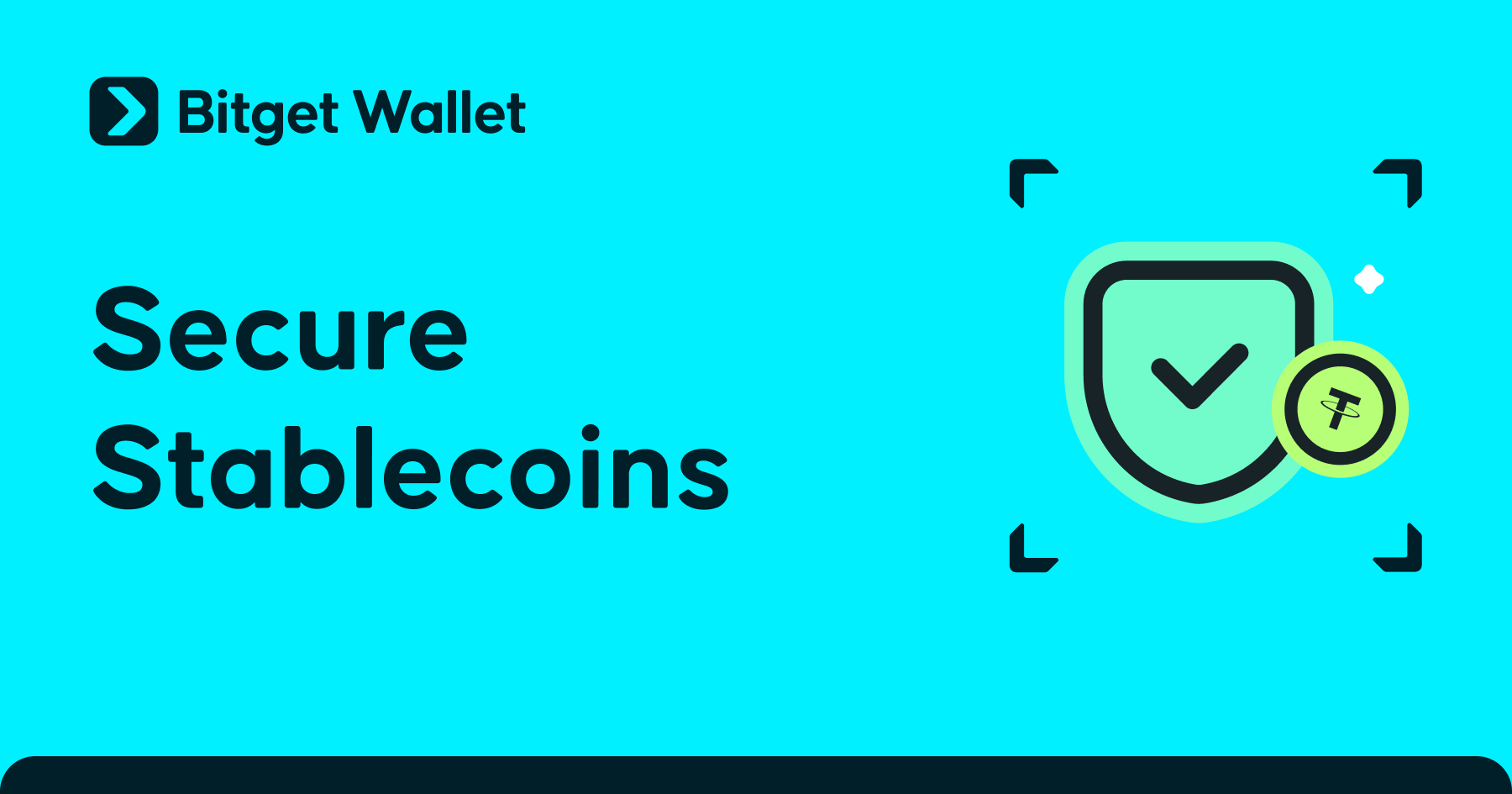How to Earn Passive Income With Cryptocurrency? A Beginner’s Guide

Passive income cryptocurrency is among the fastest-rising investment movements in 2025, and it is gaining the attention of both experienced investors and new ones. Rather than investing hours trading, individuals are discovering how to gain constant returns on digital assets with little daily effort.
This guide explores how to earn passive income with crypto through strategies like crypto staking, crypto lending, and blockchain-based reward programs. You’ll also learn about the best passive income crypto strategies, essential tracking tools, and safe ways to get started. For beginners, Bitget Wallet offers secure stablecoin storage, hot memecoin trading, and seamless cross‑chain functionality—making it a practical choice for managing crypto income streams.
Key Takeaways
- You can follow a crypto passive income guide to generate earnings without becoming a full-time trader. This approach is ideal for those who want exposure to digital assets but prefer a less hands-on investment style.
- There are multiple ways to generate returns, including crypto staking, crypto lending, and yield farming opportunities. Each method offers different levels of risk and effort, making it important to choose one that aligns with your comfort level and goals.
- Understanding risk management and tax obligations is crucial for success. By staying informed and using reliable tracking tools, you can protect your gains and ensure compliance with local regulations.
What Is Passive Income in Cryptocurrency?
Crypto passive income options now reach far beyond the mere holding of tokens. You can stake coins to validating blockchain networks, lend out assets for interest, offer liquidity to decentralized exchanges, or venture into new models such as NFT royalties and GameFi rewards. Each option has its own set of risks and benefits, so select one that aligns with your objectives and skill level.
This differs from traditional income sources like dividend-paying stocks or rental properties, as crypto operates on decentralized, global systems that often provide faster returns but with unique risks.
Why Does Passive Income in Cryptocurrency Matter?
Passive income in crypto matters because it offers financial opportunities that are not bound by geographic or banking limitations. Through decentralized finance (DeFi), anyone with an internet connection can participate in wealth-building, regardless of their local currency or economic environment.
It also provides a path to financial independence, allowing individuals to diversify their portfolios and explore innovative earning models beyond traditional markets.
How Can You Earn Passive Income With Crypto?
There are several best passive income crypto strategies available, each with its own benefits and challenges. Some focus on helping secure blockchain networks, while others enable you to lend digital assets, provide liquidity for decentralized exchanges, or even participate in community reward programs.
What Is Crypto Staking and How Does It Pay Rewards?
Crypto staking involves locking tokens on a proof-of-stake blockchain to validate transactions and support network security. In return, users receive staking rewards, which are typically paid out as additional tokens over time.
Examples include:
- Ethereum (ETH) staking: As the world’s largest smart contract network, Ethereum offers staking opportunities that are widely supported across exchanges and wallets, making it a trusted option for beginners seeking steady returns.
- Cardano (ADA) staking: Known for its energy-efficient protocol, Cardano allows users to delegate their ADA to staking pools, providing a consistent yield while supporting eco-friendly blockchain technology.
- Solana (SOL) staking: With fast transaction speeds and a growing ecosystem, Solana staking rewards users while helping secure one of the fastest layer-1 networks in the industry.
Can Crypto Lending Earn Interest Like a Bank?
Crypto lending allows asset holders to loan their digital currencies to others in exchange for interest payments, similar to traditional banking systems. Depending on whether you choose a centralized or decentralized platform, your risk and reward profile may vary.
Examples include:
- Centralized platforms (e.g., BlockFi): These operate like online banks, offering predictable interest rates and user-friendly interfaces, though they rely on third-party custody.
- Decentralized lending (Aave, Compound): These smart contract-based protocols allow direct peer-to-peer lending, giving you greater control and transparency while removing traditional intermediaries.
- Risk factors: Lending carries counterparty risk and potential liquidity issues, so it’s critical to research platform security and insurance features before committing funds.
What Are Liquidity Pools and Yield Farming?
Liquidity pools enable you to deposit token pairs into decentralized exchanges, helping traders swap assets while you earn a share of the fees. Yield farming builds on this by offering additional incentive tokens to liquidity providers.
Steps to start include:
- Choose a decentralized exchange (e.g., Bitget Wallet): Pick a platform with high trading volume and robust security measures, ensuring your funds are less exposed to exploits.

Source: X
- Select a token pair to provide liquidity: Ideally, choose pairs you already hold or believe in long-term to minimize exposure to price swings.
- Earn trading fees and incentives: These rewards accumulate automatically and can be reinvested to boost returns over time.
- Monitor impermanent loss risk: This is the potential reduction in your pool value due to token price fluctuations, making it vital to track performance regularly.
Are Airdrops, NFTs, and GameFi Good Passive Income?
There are alternative methods to earn crypto that go beyond traditional finance structures:
- Token airdrops: Initiatives send free tokens in an attempt to drive adoption, as compensation for users who possess specific tokens or for performing trivial tasks. This might be a zero-expense method of asset accumulation but is heavily reliant on project success.
- NFT royalties: Creators receive a percentage each time their NFT is resold, matching revenue over many years after the initial sale. It's very attractive to digital economy developers and artists.
- GameFi land leasing: Blockchain-based games allow users to rent out virtual land or items, providing ongoing income as the gaming ecosystem grows. However, these methods tend to be more speculative than staking or lending.
Read more: Airdrop Claim Tutorial: How to Claim Airdrop to Your Wallet?
How Do These Crypto Passive Income Strategies Compare?
Each method varies in risk, effort, and potential returns. Use this table as a quick reference:
| Strategy | Risk Level | Effort Required | Typical Annual Yield | Best for Beginners? |
| Staking | Low–Medium | Low (set & forget) | 4% – 12% | Yes |
| Lending | Medium | Medium | 5% – 15% | Yes, if using trusted platforms |
| Liquidity Pools | Medium–High | High (active monitoring) | 10% – 50% (volatile) | No |
| Airdrops/NFTs/GameFi | Variable | Medium–High | Unpredictable | No, mostly speculative |
Is Passive Crypto Income Safe and Legal?
While appealing, crypto passive income carries inherent risks and legal considerations. Price volatility can reduce asset value, and smart contracts may be vulnerable to hacking. Furthermore, regulations differ globally, so understanding your region’s compliance requirements is crucial.
Key risk factors include:
- Market volatility: Sudden price swings can reduce or wipe out your earnings, even if your strategy itself performs well.
- Smart contract vulnerabilities: Code bugs or exploits in decentralized apps can put your funds at risk without any recourse.
- Regulatory uncertainty: Rules around crypto earnings vary by country and are still evolving, meaning compliance is essential.
- Tax implications: Most jurisdictions treat staking rewards, lending interest, and similar earnings as taxable income.
What Tools Help You Track and Optimize Passive Income?
Efficiently keeping your revenues in check and fulfilling regulatory responsibilities demands dependable tracking measures. In the absence of control, losing track of earnings, expenses, and overall operations on multiple platforms is effortless. With the appropriate tooling, you can monitor multiple wallets, make tax filing more efficient, and assess returns, with the ability to make more intelligent strategy changes while remaining compliant with regulatory guidelines.
- Blockpit: It assists in tracing crypto transactions, computation of possible gains or losses, and generating tax reports quickly to save time during tax filing season.

Source: X
- CoinLedger: An easy-to-use solution that makes tax reporting simpler and connects easily with mainstream exchanges, such as Coinbase Earn for added reward tracking.

Source: X
- DeFi portfolio trackers: These applications enable you to track a variety of wallets and protocols in real-time, so you're constantly informed about shifts in performance or yield prospects.

Source: X
- Crypto tax reporting software: Specialized apps like Koinly designed to convert raw transaction data into compliant tax documents, preventing costly errors.

Source: X
How to Start Earning Passive Crypto Income Step by Step?
Follow these steps to begin generating passive income from your crypto holdings:
Step 1: Choose Bitget Wallet
Start by selecting a reliable crypto wallet. Bitget Wallet is a strong option because it provides safe asset storage while offering access to decentralized finance (DeFi) applications and staking services.
Easily unlock cross-chain DeFi and stablecoin savings with in Bitget Wallet.
Step 2: Select Your Passive Income Method
Decide how you want to earn. Staking is ideal for long-term holders seeking stable returns, lending offers interest payments for supplying liquidity, and liquidity pools allow you to earn fees while supporting decentralized exchanges. Pick the approach that aligns with your time commitment and risk tolerance.
Step 3: Evaluate Risks and Rewards
Before committing funds, review the risks involved. Consider market volatility, platform security, and local regulatory requirements to ensure your chosen strategy matches your financial goals.
Pro Tip: For beginners, Bitget Wallet integrates easily with DeFi ecosystems, making it one of the most straightforward ways to start earning.
Read more: How to Earn Passive Income with Ripple ($XRP): Best Crypto Investment in 2025?
Conclusion
Passive income cryptocurrency offers a way to grow wealth without daily trading or high‑maintenance strategies. By selecting the right methods, from staking and lending to more experimental areas like NFTs, you can generate income while diversifying your portfolio.
This crypto passive income guide emphasizes risk management, reliable tools, and platform research as key factors for success. Unlock cross‑chain DeFi and stablecoin savings easily in Bitget Wallet and simplify your earnings journey.
Start exploring staking, lending, and reward programs today using Bitget Wallet—your beginner‑friendly, all‑in‑one solution for crypto management. Download and Sign up for Bitget Wallet now – grab your $2 bonus!
Sign up Bitget Wallet now - grab your $2 bonus!
FAQs
1: Which crypto is best for passive income?
Ethereum (ETH), Cardano (ADA), and Solana (SOL) are popular because of their reliable staking systems and strong community support. These coins offer stable returns and have established infrastructure, making them beginner-friendly options.
2: Is staking safer than lending?
Staking is typically safer since your tokens remain on-chain and help secure the network. Lending involves borrower risk and platform solvency, so while returns can be higher, the risk profile is also elevated.
3: Do I pay taxes on crypto passive income?
Yes, most jurisdictions consider staking rewards, lending interest, and liquidity pool earnings taxable. Using tools like Blockpit or CoinLedger can simplify tracking and ensure compliance with tax laws.
Risk Disclosure
Please be aware that cryptocurrency trading involves high market risk. Bitget Wallet is not responsible for any trading losses incurred. Always perform your own research and trade responsibly.
- What Is Crypto Fear and Greed Index: How Traders Read Fear vs Greed Signals2025-11-19 | 5 mins
- How to Pay with Crypto: Fast, Safe, and Beginner-Friendly Method2025-11-18 | 5 mins
- How to Convert Your Crypto to Cash: 5 Easy Ways for Beginners2025-11-18 | 5 mins

















